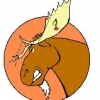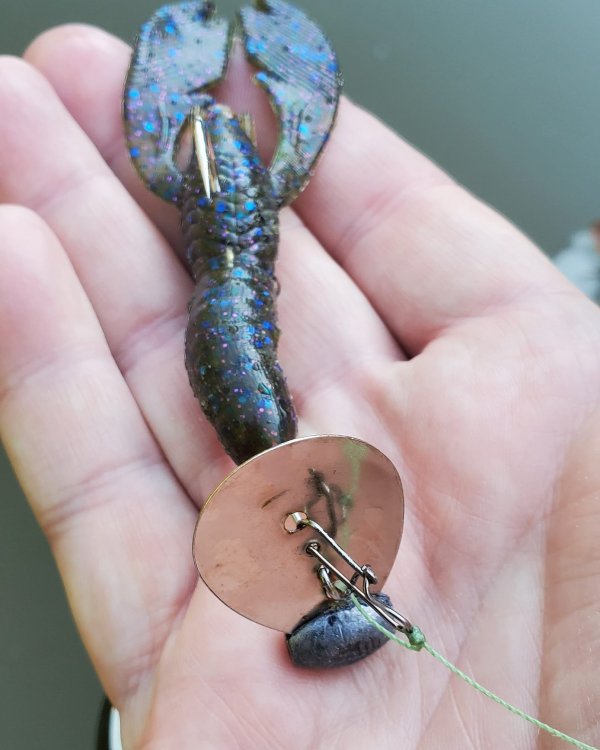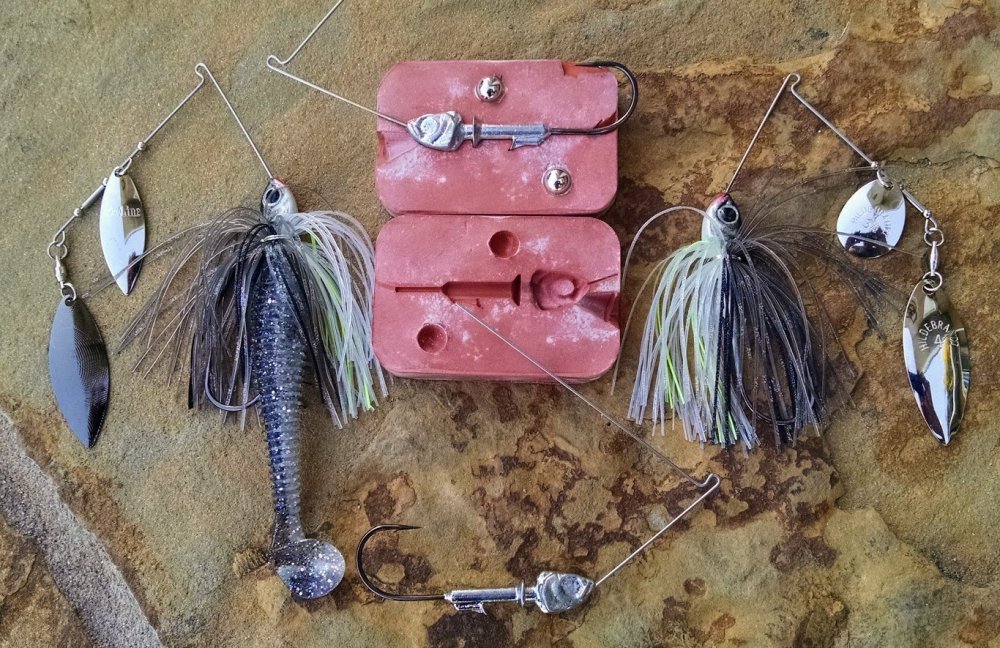-
Posts
199 -
Joined
-
Last visited
-
Days Won
5
Content Type
Profiles
Articles
TU Classifieds
Glossary
Website Links
Forums
Gallery
Store
Posts posted by Mad Moose Baits
-
-
I want to mess around with making stencils, but would like an accurate RC 1.5 and/or 2.5 stl model to work with. Free or paid. Any help would be appreciated!
-
Used a #5 Colorado blade for the blade and a 1/4 oz egg sinker.
This was an interesting build as I had MULTIPLE fails on this. Getting the alignment and spacing was key, if the line tie was too high it just wouldn't shake.
Also it hated a trailer and skirt but a trailer or skirt alone and it did fine. All in all a fun build, just have to do the video for my channel now.
-
 2
2
-
-
54 minutes ago, jigmeister said:
Great topic and video ! Instead of cutting a sprue afterwards a worm weight works great for a sprue shape . Drill a small hole in the master jig head just big enough for a short piece of spinnerbait arm wire . Put the wire in the hole you drilled and slide the worm weight onto the wire up against the master . Check alignment to make sure it's straight for a clean parting line .
Awesome suggestion! I have started making cones from polymer clay but this is even easier.
-
19 minutes ago, robbor said:
Good job on the mold. I'm glad someone used some of the info I posted. Let me know if u need any help. Rob
Actually didn't see yours! I had found a couple of videos where the guy makes pendants and went from there.
Did find your post via search just now. Nifty jigs!
-
15 minutes ago, Munkin said:
Where can I get one of those metal frames from?
Allen
Posted the link in my reply a couple of comments up!
-
On 8/10/2019 at 10:19 AM, jcool3 said:
Another source https://www.ottofrei.com/Castaldo-Econosil-Price-Per-Lb
they have whole line of castaldo mold making supplies.
Wonder where I can get a bigger frame than the standard 2 x 3 inches? Thinking of making one using square aluminum tubing 2 x2 inches ... Also I have t-shirt press which supplies heat and pressure, not sure how well that would work.
Great video Mad Moose.
Have you been able to find other sizes? I found 2.5 x 3.75 x 1 HERE
Sorry it took me a while to get back to you!
-
 1
1
-
-
-
I use bolts and wingnuts through aluminum plates. It's in the video.
-
Red Silicone Mold Rubber 9"x 1" for Centrifugal Spin Casting Lead and tin Alloy https://www.amazon.com/dp/B07F2JP7Q8/ref=cm_sw_r_cp_apa_i_yo0pDbXCBWJKX
-
 2
2
-
-
So I love to make YouTube videos and here is my latest and how I have started making vulcanized rubber molds. Yes, there are a couple of issues that are easy to fix (better master, proper hook size) but I am happy so for...
-
 2
2
-
-
Little Blue Bender and straight wires maybe?
-
On 10/11/2007 at 8:45 PM, cadman said:
This is just a wild thought, but when I do my bullet weights in Spike it, I put a piece of wire through the bottom of the bullet weight. On the bottom I have a small loop in the wire, to keep the weight from falling through. Then the wire goes through the bullet weight through the top, and then I bend the wire to form a loop, and hang it on my rack that I put into my toaster oven. What really works well here is christmas tree ornament hook wire. You can bend them really easy many times with out breaking them. The are very flexible. Last year at the end of the season, I bought 10 boxes on clearance for 10 cents a box. When I'm done with them I just throw them away.
We are on the same page. I would add I use the wires that jewelry peeps use to make earrings, very soft so you can reuse. One thing I do is after I dip it I lift it up a little to break the initial bond between the pain and the eye at the end of the wire. If you bake it and it is still where you started after dipping, it can be a pain to get the sinker off. I also like to use the acrylic paint from Michael's that is made for glasses etc. I use a small drill bit and put dots on the sinker after dipping and then bake it like normal.
-
Thanks guys!
-
Posted this video yesterday. It's how I use my Little Blue Bender for my buzzbaits and spinnerbaits.
-
 1
1
-
-
Thanks a ton for the great reply. I'll probably stick w Do It etc. Tight lines!
-
 1
1
-
-
I have seen these on Amazon and ebay. What kind of material is this? I have used Rock Putty but it isn't as clean as this. Thanks in advance and hope everyone is well.
-
On 7/2/2018 at 7:56 PM, Mavric said:
I like the idea. Any updates on the project?
Have stepped back for the time being. I am getting married in Augustand taking 18 days off so the planning and paying for said plans have taken over. I haven't quit...just paused.
-
 1
1
-
-
OK guys, just tried ladle pouring. Even when I did a completely crappy job it did WAY better than bottom spout on my pot. Thanks for the tip! Can't wait for my Drop Out to come in, too!
-
 1
1
-
-
Frankford Arsenal mold spray help at all? This mold makes me crazy too
-
Yeah, had it in the can. baked it at 335 for over an hour...
-
So I tried to vulcanize a mold without the pres. I mad my own cad using a 12" flange joint and aluminum discs to apply pressure.
First attempt I bolted down my lid against the discs to apply pressure and I did get it to vulcanize, it is much harder and you can't mar it with a blade or screwdriver like you could when it was unvulcanized.
However....it never "flowed" or appears to have liquefied like I am told it should. It did form around my masters but I am not sure how well, I have yet to try and cast with it.
Is this a heat problem or lack of pressure?
-
The epoxy will indeed be inside the body so this should work well. Really appreciate the reply!
-
May also consider JB Weld High Heat putty, but it may be hard to get it in a small hole (1/16th") and such...
-
OK, I am modifying some heads to accept a wire form and then will be making a spin mold from them. I will drill into the lead head and put the wire in it. I could epoxy the wire into place, but I worry the heat during vulcanization will soften it. Would a solder paste work? I figure I could hit it quickly with a torch or even a heat gun.
As always, I welcome advice and suggestions!






What do I need to protect myself from lead
in Hard Baits
Posted
OH! I made a video about this!